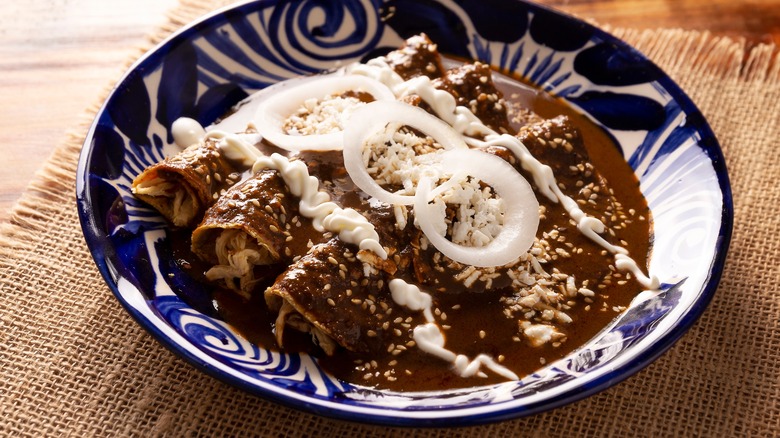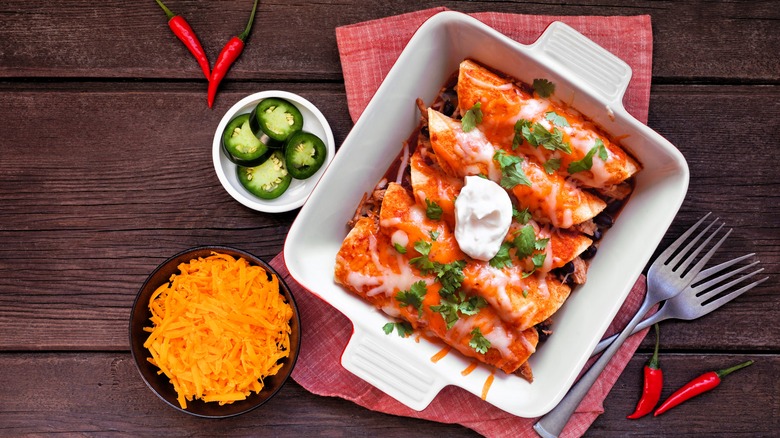The Origin Story Of Enchiladas Traces Back To The Aztec Empire
Mexican dishes are vibrant and varied, with a wide range of regional specialties. In fact, it was the first cuisine inducted to the Intangible Cultural Heritage of Humanity by UNESCO, thanks to a complex range of influences and traditions. While European techniques from Spain, France, and Greece all impacted the country's gastronomy, many of the strongest roots lie in indigenous techniques.
The region is home to many endemic plant and animal species, with corn, beans, and pepper products being the most culturally fundamental. When Spaniards arrived on Aztec land in the 16th century, they wondrously documented the preparation of hundreds of various dishes. Among them was an early version of enchiladas, not yet known by such a name but already popular in both local markets and in royal fare. Early variants involved all three central components: a corn tortilla filled with beans and covered in peppers.
As such, the Mexican classic is many centuries old. Not just from Spain's arrival, but further back. Thousands of years ago, Mayans were already known to craft proto-enchilada tortilla dishes stuffed with fillings and topped with pureed tomatoes. The style caught on with the Aztecs, who added chiles and beans and called the dish chīllapīzzali in their native Nahuatl. Such a culinary innovation marked the birth — and probably inspired the name — enchilada.
Aztecs prepared enchiladas long before Spanish arrival
Delicious and filling, the Aztec's rendition of enchiladas quickly became popular with Spanish colonizers. The indigenous people added everything from fish to eggs and vegetables into their recipe. The Europeans then introduced their own spin to the dish, such as the now ubiquitous cheesy version, as well as stuffed with pork and chicken. Over the centuries, the food became more strongly interlinked with Mexico's identity, especially after the nation gained independence. In 1831, several recipes were noted in "El cocinero mexicano", a fundamental book to Mexican cuisine.
By the early 20th century, enchiladas became integrated into Tex-Mex cuisine and parts of the Southwest. They were noted as street food sold in San Antonio and appeared on menus in New Mexico. Concurrently, many regional enchiladas kept solidifying in Mexico, from the carrot and potato style native to Guanajuato to the mole-topped variant native to Puebla.
And so, from their Aztec origins, the mouthwatering dish never lost its esteemed status in North American cuisine. With so many possible upgrades and convenient preparation, it's not hard to understand why their rich history never faded into obscurity.

